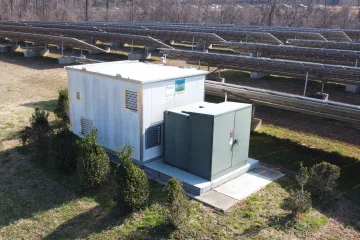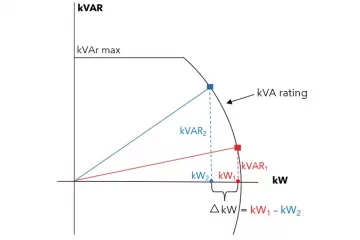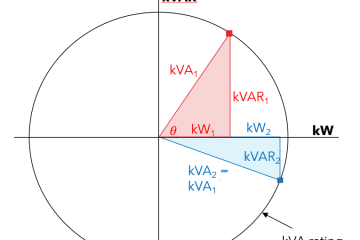If you work with utility-scale or community solar PV, you may have heard the utility refer to the term “power flow study”, also called “load flow study”, and wonder what that is.
Utility distribution feeders are designed and operated at medium voltage, also called primary voltage, which is typically between 4 kV and 35 kV in the US. At the higher end, these feeders can serve up to 3500 customers and extend up to 100 miles in length or more.
It is uneconomic to install sensing and monitoring equipment in large quantities on these vast feeders, which record voltage, current, power flow, power factor and other electrical quantities. Even though the utility can’t monitor these electrical quantities across all their feeders, they are important to ensure that the system operates as designed, that customer and utility equipment are not exposed to electrical conditions which may damage it, and for utility planning of future system upgrades and expansions.
With relatively small quantities of sensing on the primary feeders, and since customer load (and now DER – Distributed Energy Resources generation) show quite a bit of variability over all the hours in a year, utilities have to use mathematical computer models to calculate the estimated electrical quantities on a feeder, given different scenarios of load and generation on a feeder at a given time.
The purpose of the power flow is to calculate estimated quantities for voltage, current, power, and power factor along a given feeder. They rely upon special utility distribution planning and design software, available from a number of software vendors, with power flow being just one module within a suite of software. The software and the power flow algorithms are relatively mature, taking into account the non-linear nature of the power flow solution, as well as the unbalanced three-phase characteristics of utility distribution systems.
The inputs for a power flow study include a connectivity model of the feeder, which contains all or nearly all the components on a feeder, including overhead lines and underground cables, transformers, capacitors, voltage regulators, and now DER. The connection of these components is included in the model as well as component electrical characteristics like impedance (resistance and reactance), equipment ratings (capacity), and more.
Another significant input to the model is the location, size and type of customer load and DER. These quantities vary with time, so power flow studies can be done using representative hours that are relevant to the purpose of doing the power flow study. In most cases, loads are estimated using data from the utility’s metering system, and DER production/consumption is done using actual metering data from a given facility or using representative data from other facilities. The power flow calculation uses all of these parameters, and then some, to converge to a mathematical solution for the electrical conditions throughout the feeder model.
For DER developers, owners, and engineers looking to install utility-scale or community solar PV plants, power flow studies provide the utility with an indication of the possible impacts that a DER project might have on the electrical conditions on a feeder. For example, they may indicate that a 3 MW solar PV plant may create voltages that are excessively high under certain circumstances, or they may indicate that the proposed project will result in current flow that overloads existing feeder conductors for some scenarios.
Based on the power flow calculations, the utility may address these problems with the developer during the application process. Similarly, many utilities are using power flow studies, along with other analysis, as the basis of their web-based “hosting capacity maps”, which indicate to developers the approximate locations and size of utility-scale DER that might be accommodated on existing feeders without modifications to the feeder equipment.
Tim Taylor is the founder of Electric Distribution Academy, and all his courses are hosted exclusively on HeatSpring. Tim is the instructor for several courses focused on utility distribution, including “Interconnection of Utility-Scale Solar PV to Distribution”, “Understanding IEEE 1547-2018 – Interconnection Standard for DER on Distribution”, and “Electric Utility Distribution Equipment”.


